Post by Danny Leister-Gray, undergraduate at Portland State
“I profess to learn and to teach anatomy not from books but from dissections, not from the tenets of Philosophers but from the fabric of Nature.”
~ William Harvey
I am a student who recently transferred to Portland State University, and I’m currently taking one of Dr. Bill Griesar and Jeff Leake’s classes. Recently, I had the pleasure of learning outside the classroom by accompanying NW NOGGIN to their latest event, “Return to BioGift!”
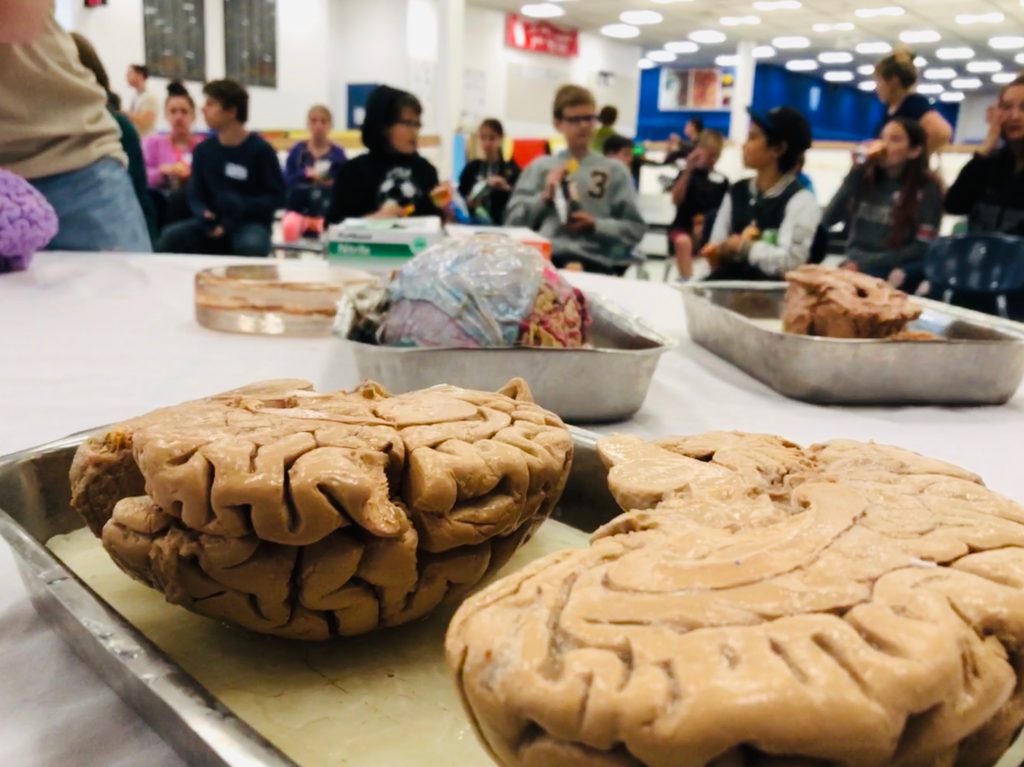
LEARN MORE: Return to BioGift!
LEARN MORE: NW Noggin @ Portland State University
LEARN MORE: The Art and Science of the Brain: NW Noggin makes neuroscience fun
BioGift is an organization that accepts body donations, so they can procure (remove and obtain) specimens for surgical training, biomedical research – and also outreach. They procure a wide variety of body parts and organs, including (but not limited to) the torso, and – much to the joy of NW NOGGIN and nerdy students like me – the brain.
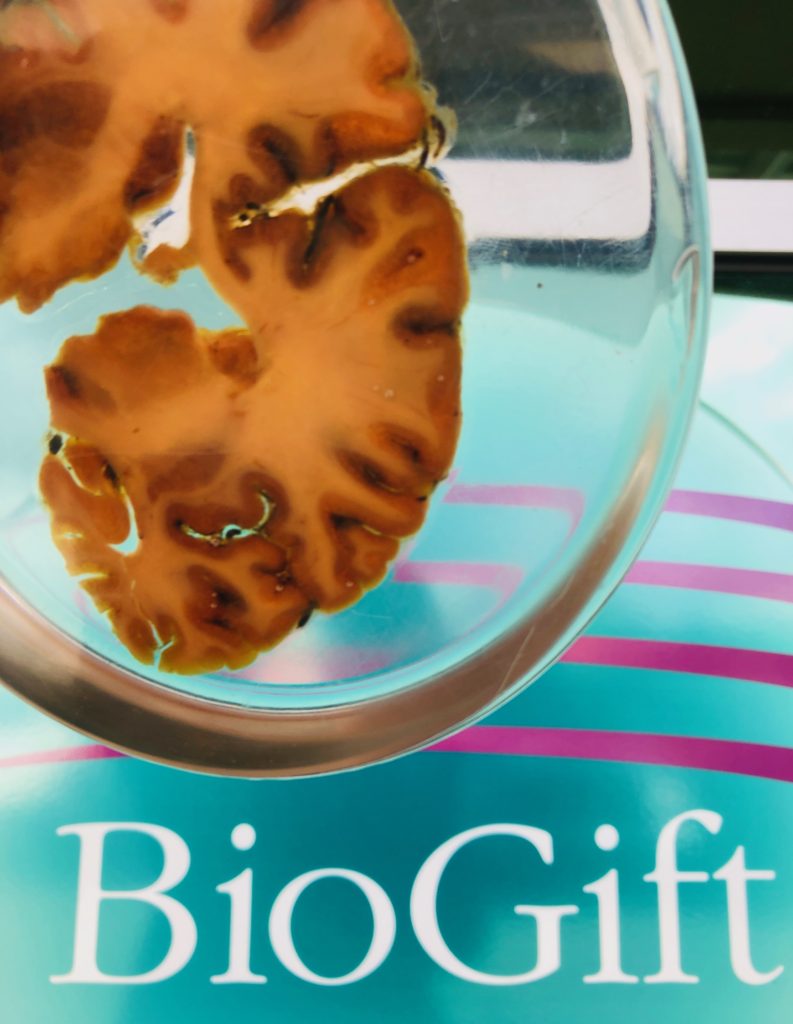
LEARN MORE: Adventure A-Head
LEARN MORE: Human cadaveric dissection: a historical account from ancient Greece to the modern era
LEARN MORE: A BioGift of Brains
In my undergraduate career thus far, the opportunity to see a real human brain has been an unfortunately rare event…
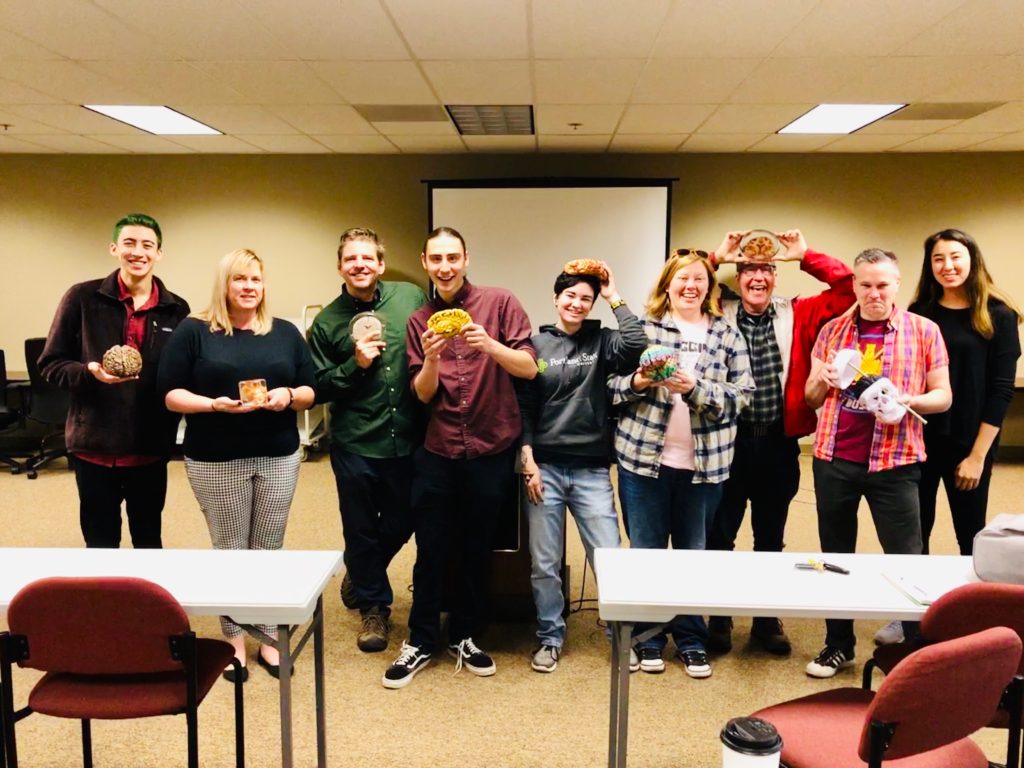
As a result, I was ecstatic that accompanying NOGGIN to BioGift meant that I could observe a human brain up close and in person, within just my first week of moving to Portland and starting classes at Portland State!
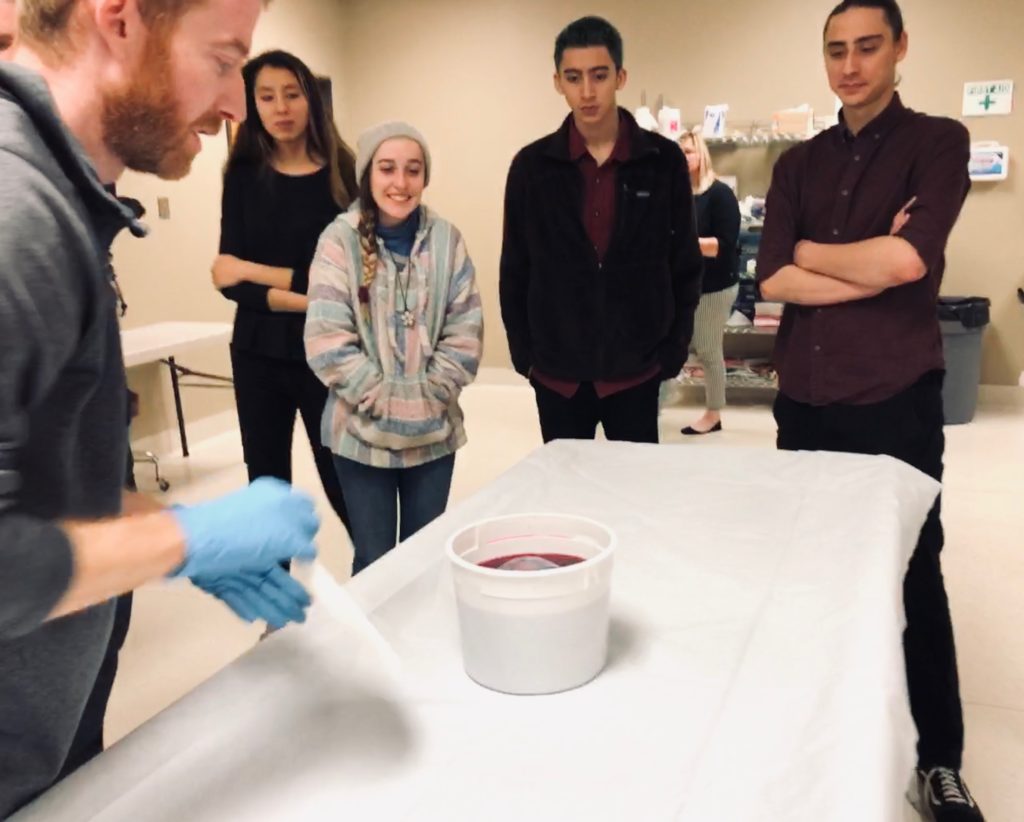
My gratefulness for BioGift’s generosity deepened when I learned more about how truly difficult it is to remove a brain from the skull, while trying to keep the structure intact. Notably, the cerebellum – a large portion of the hindbrain, critical for regulating balance and movement, and involved in social behaviors and reward – served as a point of discussion, since it is the hardest region to procure. This is because of how it’s essentially located within its own skull pocket, and is the “mushiest” part of the brain.
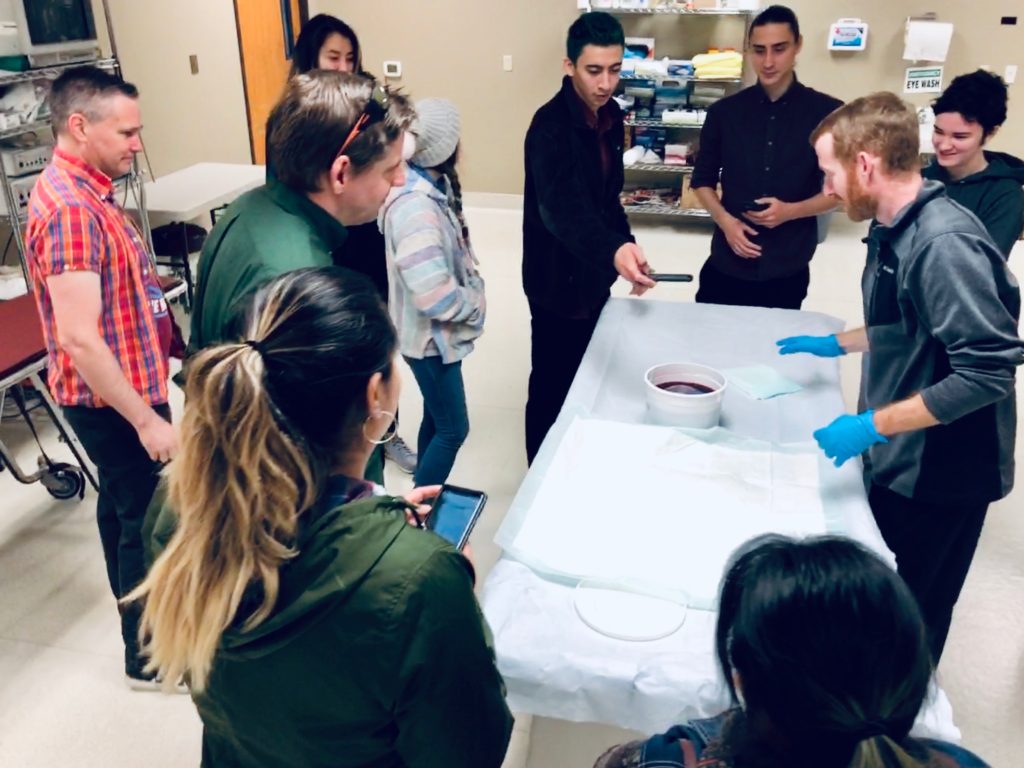
LEARN MORE: Neuroanatomy, Cerebellum
LEARN MORE: New Findings Reveal Surprising Role of the Cerebellum in Reward and Social Behaviors
LEARN MORE: Cerebellum connects to brain’s reward system
I also learned more about the extensive process for preparing a brain specimen. For example, though NOGGIN plans to introduce this brain at future youth outreach events, it will be weeks before it can be handled. This is primarily because the brain needs more time to firm up…
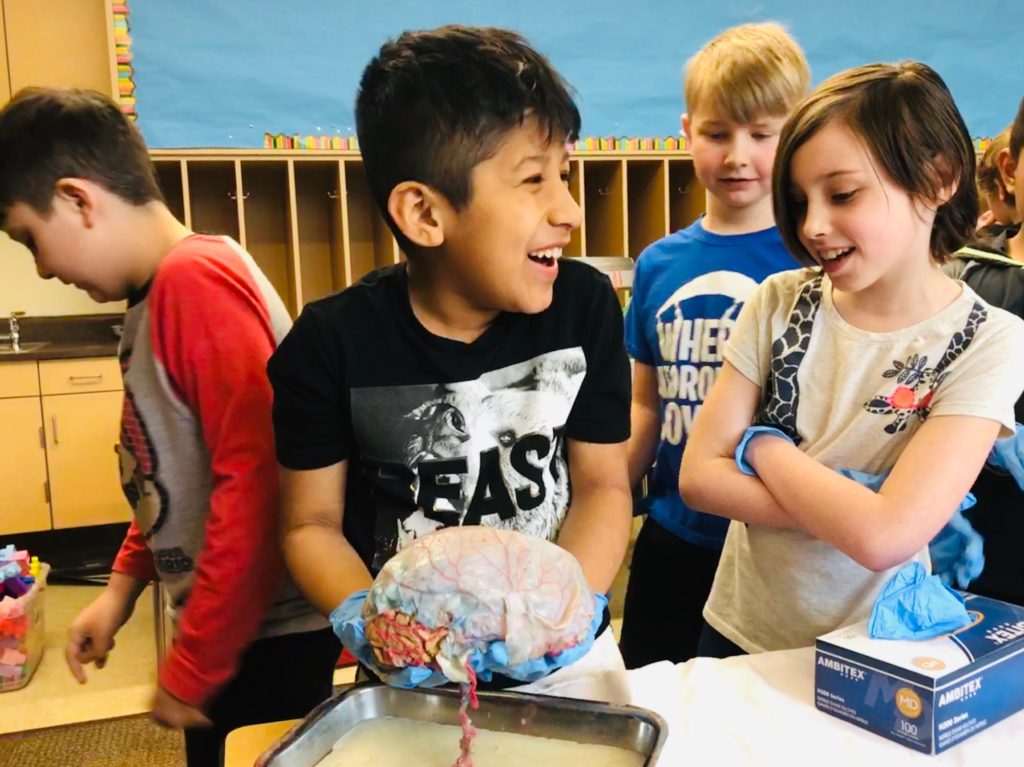
Generally, the youth that NOGGIN work with find great pleasure in picking up and handling the brains (understandably so!). However, if the delicate brain is still too soft at this point in time, there is a risk that it will fall apart or become damaged. That may be a little disturbing to think about, but it’s amazing to realize how physically fragile the brain truly is, despite being so powerful that it controls all of our thoughts and actions!

For the time being, before BioGift passes the brain specimen to NOGGIN, it will be kept submerged in a dark red embalming solution (a mixture of chemicals, preservatives and dyes). This fluid is actually a powerful tool for helping the brain firm up, and it has the plus of coloring the brain a grotesquely beautiful deep red.
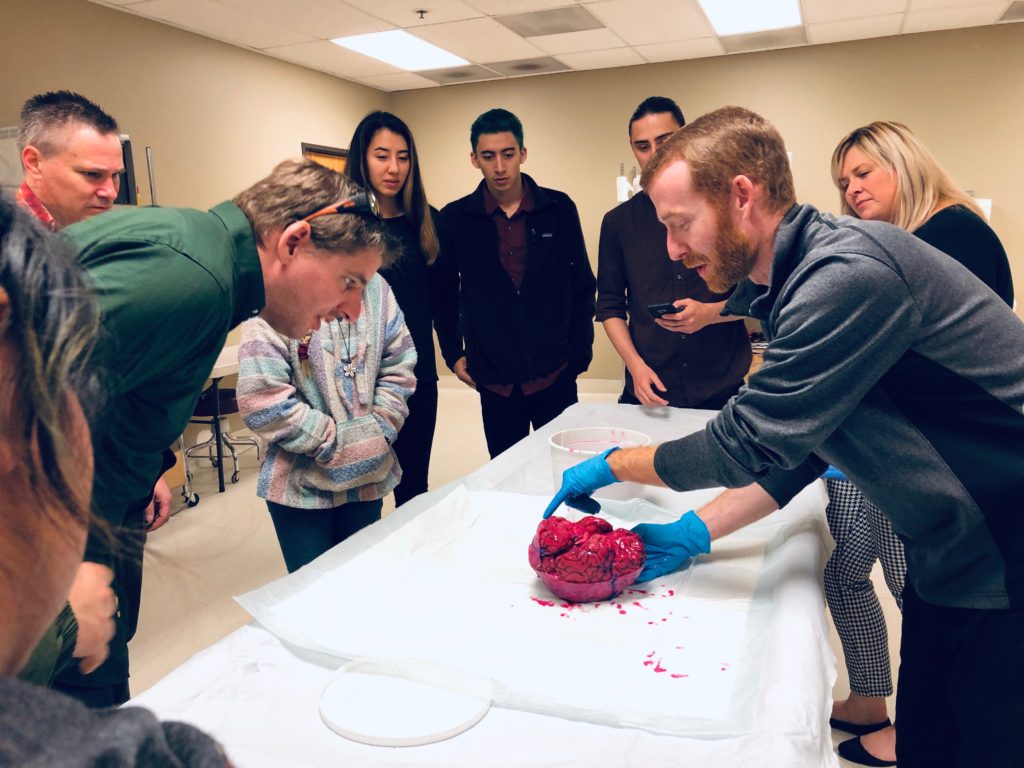
LEARN MORE: Human body preservation – old and new techniques
LEARN MORE: What are Embalming Chemicals?
BioGift’s brain specimen also contained prominent blue and red blood vessels creeping all over its sides, as a result of injections of acrylic paint! This makes the blood vessels more visible for training, and I found it utterly fascinating. After the head – and brain – are separated from the body, the paint is injected into blood vessels within the neck, specifically the carotid arteries and jugular veins.
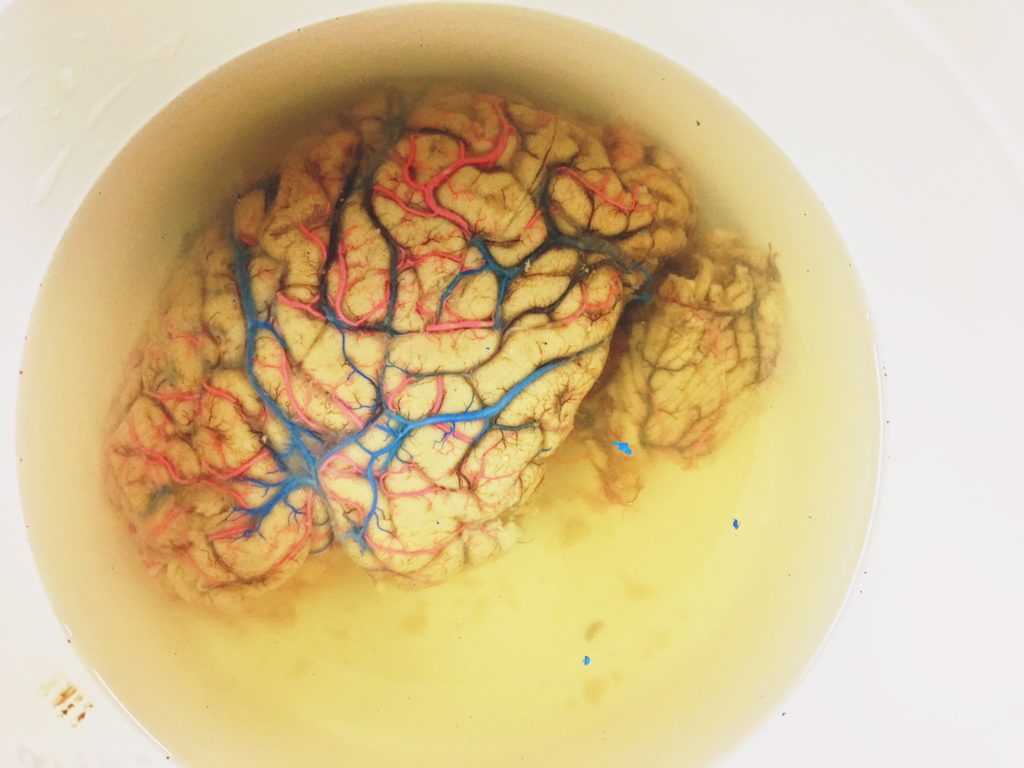
“Blood is that fragile scarlet tree we carry within us.”
~ Osbert Sitwell
As a result, it’s much easier to see where the blood normally travels. The deep blue vessels not only gave me a deeper understanding of the brain’s vascular anatomy, but also offered a striking artistic aesthetic (especially when paired with the deep red color of the embalming fluids).
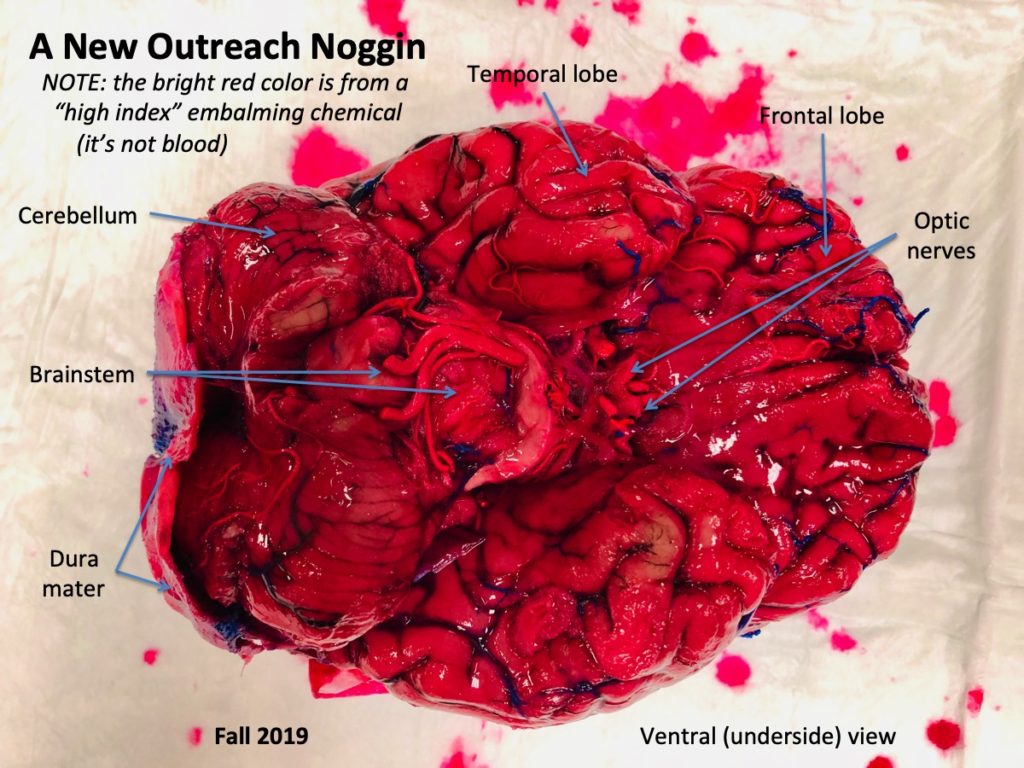
At one point in the conversation, the group began asking Andrew, one of the BioGift employees, about the process of procuring brains for research. The nature of these questions primarily revolved around Alzheimer’s Disease research, since researchers can look for its biological signature within the cerebrospinal fluid (CSF) and certain brain regions (like the hippocampus) after death. In these cases, there is high pressure to quickly obtain a CSF sample, remove the brain, and get the specimen to the researchers. This all needs to be done within the timespan of a few hours for the brain to be viable for Alzheimer’s research purposes. As one could assume, getting this procedure done within the time constraints can be highly stressful.
LEARN MORE: Proteomics-Derived Cerebrospinal Fluid Markers of Autopsy-Confirmed Alzheimer’s Disease
LEARN MORE: Cerebrospinal Fluid Biomarkers in Alzheimer’s Disease—From Brain Starch to Bench and Bedside
LEARN MORE: Alzheimer’s disease CSF biomarkers: clinical indications and rational use
As someone new to Portland State University (and Oregon), I can tell that NW NOGGIN is a fantastic way to get involved with the community while absorbing information that’ll easily supplement, and add to, what I learn in my classes. The trip to BioGift was a thrilling introduction to the many experiences I hope to have with NOGGIN.
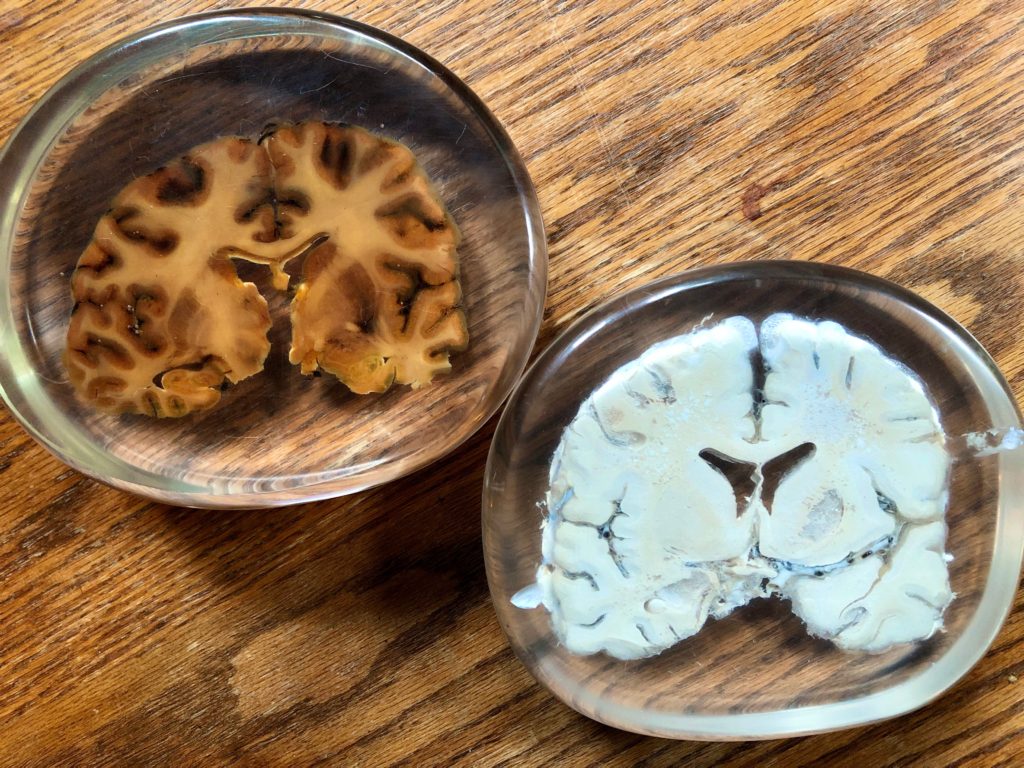
Furthermore, aside from scientists and students, I think NW NOGGIN is a powerful learning tool for the whole community. It is my belief that everyone, no matter their lifestyle, or age, or educational background, can contribute and foster invaluable knowledge from having a basic understanding of the brain – and thus, the way we work on a fundamental level!
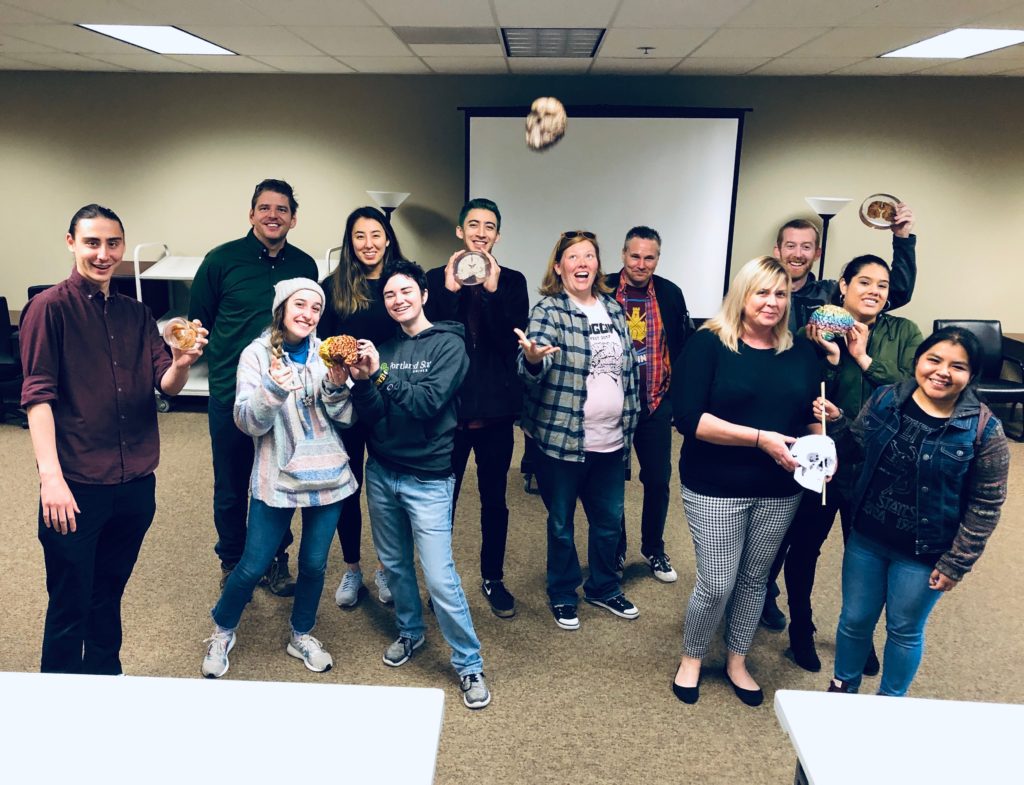
Many thanks to Bill and Jeff for running NW NOGGIN and for providing such unique educational experiences, and to BioGift for their willingness to talk with us, answer our questions, share resources and welcome us in!


